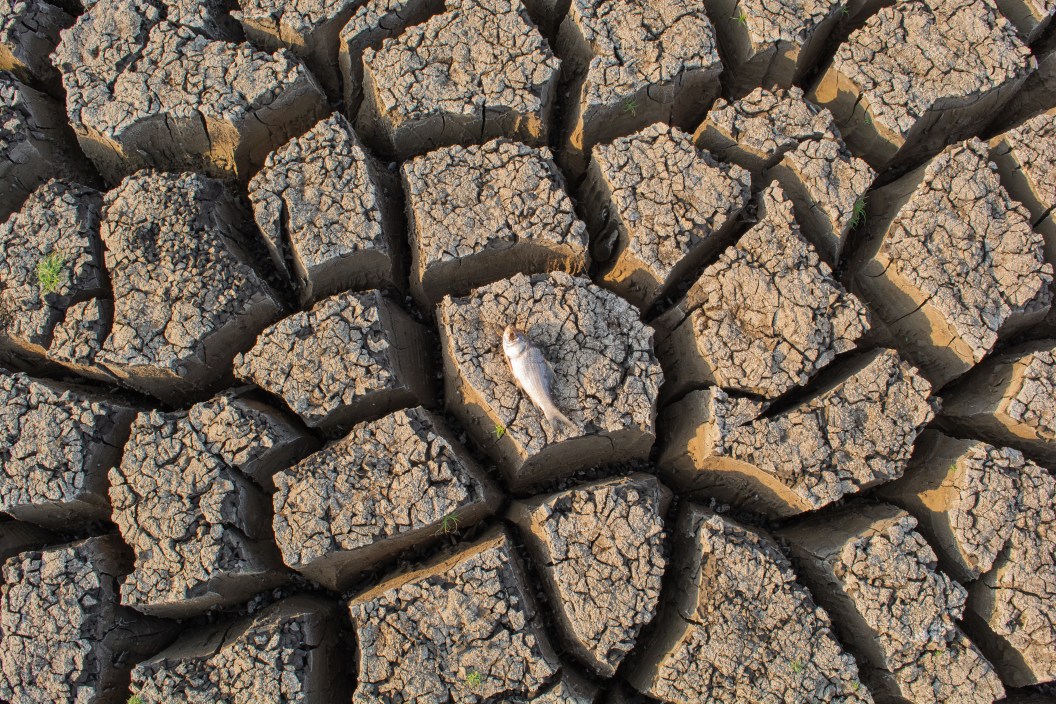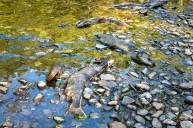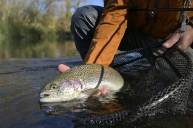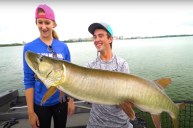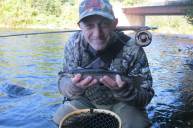California's rivers, and the native wildlife species that rely on them, are in crisis. For decades, California has been rerouting natural water flow from California's rivers. Now, populations of the winter-run Chinook salmon, Delta smelt, and other fish have dwindled so dramatically, some experts are saying they are past the point of repair.
These unsustainable water diversions of the state's freshwater resources threaten not only the species within it, but also the fishing industry, small-scale family farms, Native American Tribes, and local communities.
READ MORE: California Has Temporarily Banned Salmon Fishing — Here's Where to Go Instead
Why California Rivers Have No Water
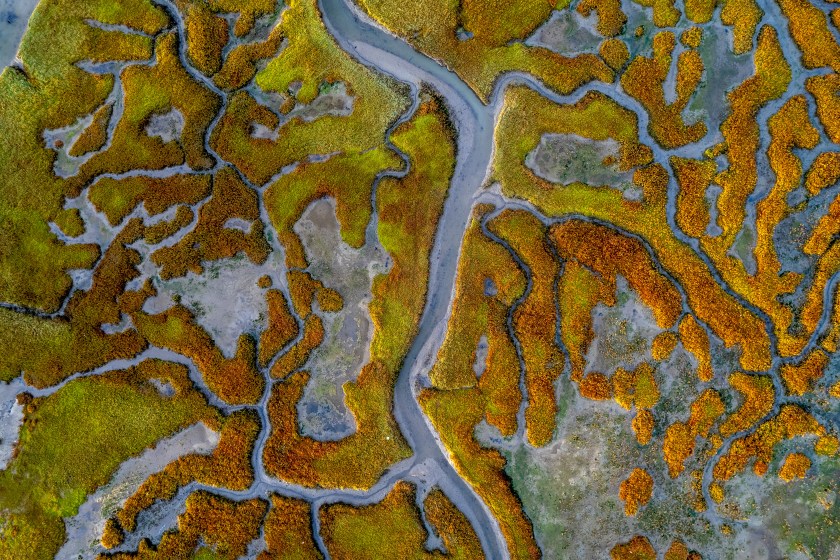
Getty Images, DianeBentleyRaymond
"The reason so little water is being left in California's rivers for salmon and other fish and wildlife is that the priority now always goes to Big Agriculture," Glen Spain, executive director of the Pacific Coast Federation of Fishermen's Associations (PCFFA), told Wide Open Spaces.
While the recent heavy rain has helped replenish the thirsty state, years and years of droughts have made the resource-draining more obvious.
Spain adds: "In the long run, the fact that the water in California is so grossly over-appropriated is devastating to the fish."
John McManus, president of the non-profit Golden State Salmon Association, told Wide Open Spaces, "Farming only makes sense where the farmers have their own local, sustainable water supply. In the Western part of California, it is unsustainable agriculture. That has contributed heavily to the decline in salmon populations today."
To be fair, water woes aren't exclusive to California and rivers in other states are drying up too. Take the Colorado River, for instance: While mighty, it sustains 40 million people across seven states, supports 15% of the nation's food supply, and fills two of largest water reserves in the country (Lake Mead and Powell). But it too has been over allocated throughout the years, and is now slowly drying up because the simply is not enough water to meet the demands that have been placed on it.
So how did California get to a place where their rivers were so low and warm that the fish can't survive?
How California's Rivers Got So Low
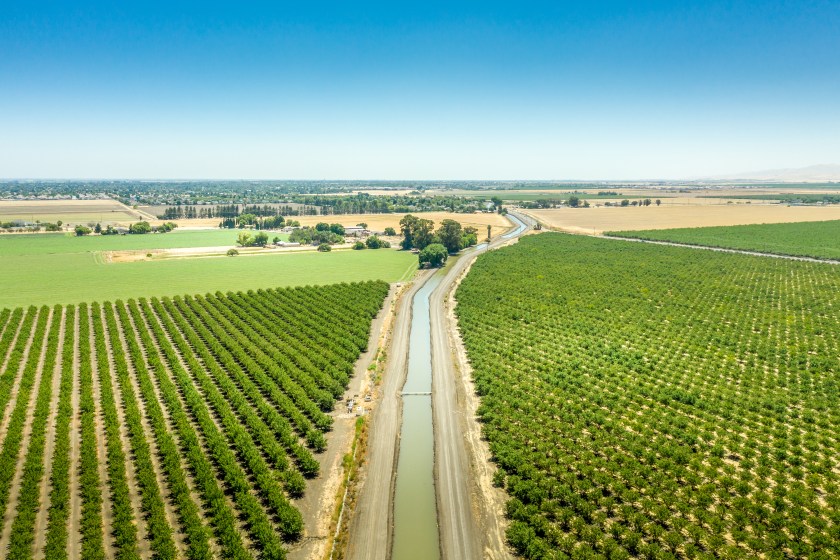
Getty Images, DianeBentleyRaymond
California has been in a drought for more than a decade, and that certainly took a toll on California's water supply. But years of allocating resources to industrial agriculture have played a massive, massive role too.
McManus told Wide Open Spaces that 80% of the water captured goes to industrial agriculture the Central Valley, while residential and other uses comprise the other 20%.
And while you may be thinking supporting agriculture is a respectable use of water, consider this: Of that 80% that goes to Big Ag, reports show 20% of that is used to water tree nuts. These are mostly export crops, so they aren't feeding America.
But they are making big money for corporate agriculture while leaving little water for California's people and wildlife.
Another consideration: The water-use for almond and pistachio acreage in the state increased by 523 billion gallons from 2017 to 2021—yes, half a trillion in four years. That's enough water to supply 87% of California's population that's instead going toward just almost and pistachio farming. Simultaneously, one million Californians can't access clean drinking water.
Spain says that one of the most serious problems facing California's aquatic wildlife is that through decades of "never say no" policies to water right permits in California, more water has been granted on paper to permit applicants than the river system physically produces.
In fact, a 2014 study from UC Davis concluded that when you combine all the legal water rights that've been granted to California river water, they exceed the total volume of those rivers by about six times over.
In other words, the government is promising roughly six times the amount of water the rivers have to start with—let alone the amount the fish and other river species can actually afford to do without.
What It Means for Smelt, Salmon, and Other Fish
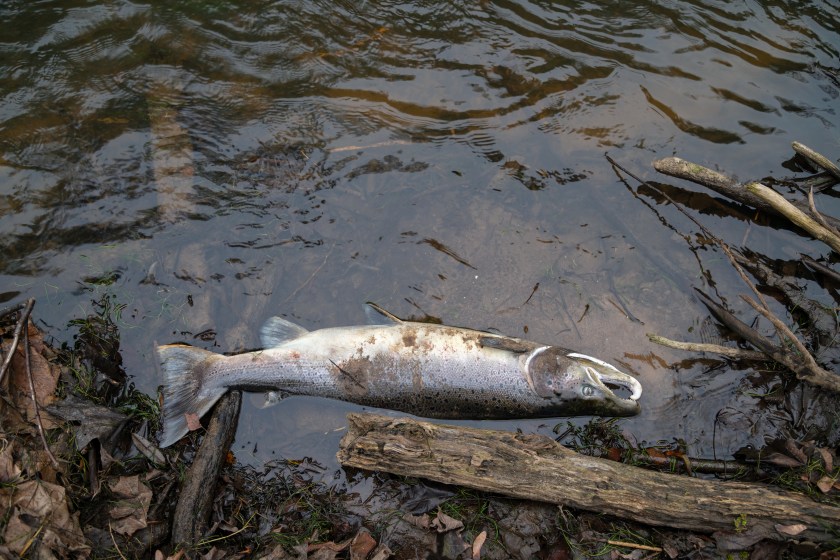
Getty Images, Ja'Crispy
The redirection of water has heavily impacted the environment of the fish we like to catch and eat, namely smelt and salmon.
"Water from Northern California needed to keep salmon alive has been, in many instances, redirected and sent down to the San Joaquin Valley [in the Central Valley]," McManus said.
Additionally, much of California's water crisis centers around the San Francisco Bay Delta, a freshwater body located at the junction of the Sacramento, San Joaquin, and several smaller rivers.
Covering more than 1,100 square miles, the Delta is the largest natural estuary on the West Coast. This locale provides breeding grounds and habitat for a range of animals, including Chinook salmon and the endangered Delta smelt.
There's a real concern here, Sierra Club California Director Brandon Dawson told Capital and Main. "A lot of the endemic species that are special to California are dying off and becoming extinct because of overallocation to certain industries."
Damage to Smelt
The damage to the Delta smelts' habitat has caused the fish to earn a spot on California's most endangered species list.
The Delta smelt live in the brackish zone of the waters where snowmelt from the Sierra Nevada mingles with tidal water from San Francisco Bay. They can tolerate only a narrow range of salinity.
But years of water diversions of the Delta's freshwater has allowed significant amounts of salt water to come further and further into the Bay-Delta system. This has created an ecosystem that does not support life for Delta smelt.
Damage to Chinook Salmon
Chinook Salmon once sustained robust numbers in many of the state's largest waterways, including the Sacramento River-San Joaquin River system and Klamath Rivers in California.
But the iconic fish has seen a sharp population decline in recent years—so much so that the state's coastal salmon fishing season was suspended this year due to insufficient population numbers.
And it's not just a coastal problem. The problem lies in the rivers, which are largely unnavigable for the fish. Chinook Salmon are anadromous; they are born in freshwater, migrate downstream as juveniles to grow and mature in the West Coast's Pacific Ocean waters, and then migrate upstream as adults to spawn in California's freshwater streams.
But the past couple of years, we've seen record low numbers of salmon making the trip. There are simply not enough salmon to comfortably get a return of adults to reproduce this year, McManus says.
In addition to too little water left in the rivers, California's agribusiness heats the water to a temperature that's too hot for the salmon to survive.
Salmon are cold-water fish. They need a water temperature range from about 55 to 64 degrees Fahrenheit to thrive. In 2020, there was a massive in-river die-off among juvenile salmon after a push to maximize irrigation deliveries left the remining water's temperature too high.
"Too many of the juvenile salmon from the 2020 brood year either died as eggs or died as juveniles before they could even get out to sea," Spain explains. "Now, there are just too few returning adults in 2023 to even sustain any fishery this year."
Outside of wildlife conservation, depleted salmon numbers also affect the livelihood of local fishermen. The lower numbers also means less visitors for fishing tourism and less recreation for the residents of California.
California's Chinook are a case study for the argument that conservation is equally as important as profits and must be considered so on a governmental level.
After all, nearly wiping out the state's poster fish didn't happen overnight; years of legislation that deprioritized conservation led to it.
Mitigation Efforts
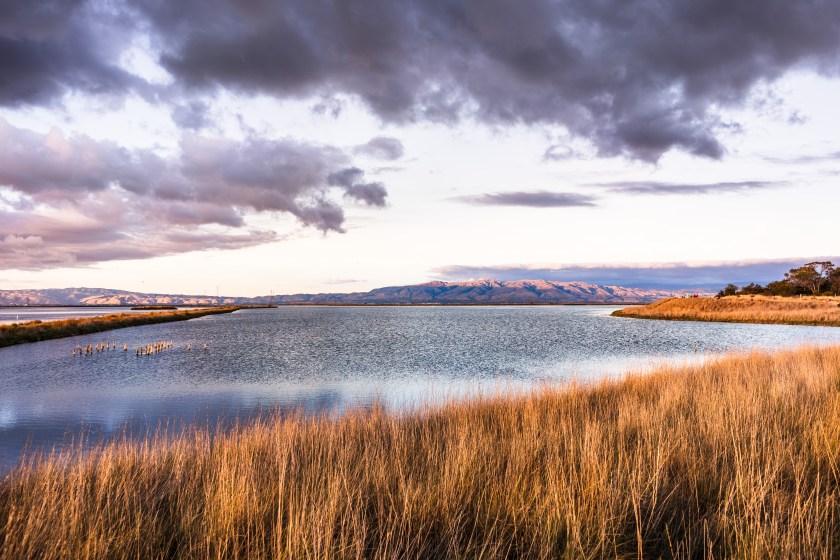
Getty Images, Sundry Photography
You will still see Chinook in California's rivers, but they're most likely hatchery-raised fish that were released into wild waters, which the state has been doing for decades. In the past, most Chinook were released at inland locations and trusted to make the harrowing journey to the coast on their own. But in recent years, because of the hurting population, they're being released in locations much closer to the coast to reduce the strain and duration of the journey.
Michael Milstein, public affairs officer for the National Oceanic and Atmospheric Administration (NOAA) told Wide Open Spaces says there was a similar collapse in salmon numbers in 2008-2009.
And in good news, those salmon numbers did rebound quickly afterward. "So there is every reason to think they can recover again if the conditions support it," he adds.
What's more, Milstein points out the heavy precipitation of the last winter in California shows how quickly the picture can change to help refill the rivers somewhat, naturally. Although, the solution is certainly not as simple as a bit of rainwater.
Moreover, there are exciting restoration projects in the works.
Restoration Projects Already In the Works
The removal of four hydroelectric dams on the Klamath River—a project 20 years in the making—received final approval in December 2022. Once the dams are brought down, it'll open over 300 miles of historical habitat to salmon and steelhead that has been blocked by the dams for almost 100 years.
In another project, last summer the California Department of Fish and Wildlife (CDFW) worked with the Winnemem Wintu Tribe and federal partners to return approximately 20,000 fertilized, endangered winter-run Chinook salmon eggs to the McCloud River upstream of Shasta Reservoir. This was the first time these types of Chinook were back upstream since the construction of the Shasta Dam in the 1940s.
And there is substantial funding coming: The CDFW recently announced nearly $36 million in projects to benefit salmon and their habitats, and to further support climate resiliency, wildlife corridors and wetlands restoration.
Grassroots conservation groups, such as the Sierra Club, have lobbied for more resources to be allocated for proper management of California's water resources.
PBS recently released River's End, a documentary that explores the water crisis and the stakeholders affected by it.
The Future for the Fish
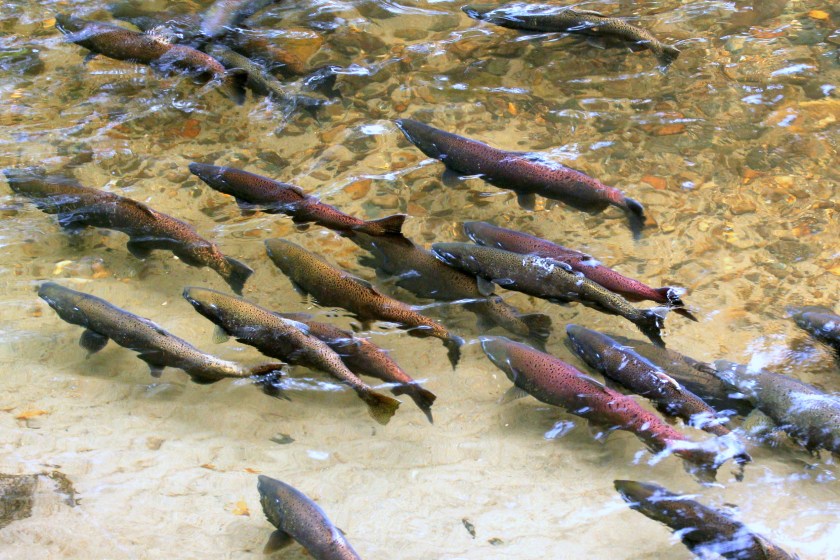
Getty Images, randimal
There are a lot of improvements that need to align to truly save the smelt, salmon, and other fish populations in California's rivers: Scientists say they need freshwater habitat and water, favorable ocean conditions, careful management of harvest, and support from well-managed hatcheries, Milstein says.
Moreover, improvements would require taking resources away from Big Ag, which is its own battle and debate.
But finding solutions would help secure the livelihoods of fishermen, the health of fish populations, and the recreation that brings joy to so many people.
"Salmon cross so many ecological and political boundaries that we all have to work together to protect them," Milstein said. "Just as no single factor caused the decline, no single action will be sufficient to recover them."
READ MORE: 13 Hunting and Fishing Organizations Worth Following and Joining
